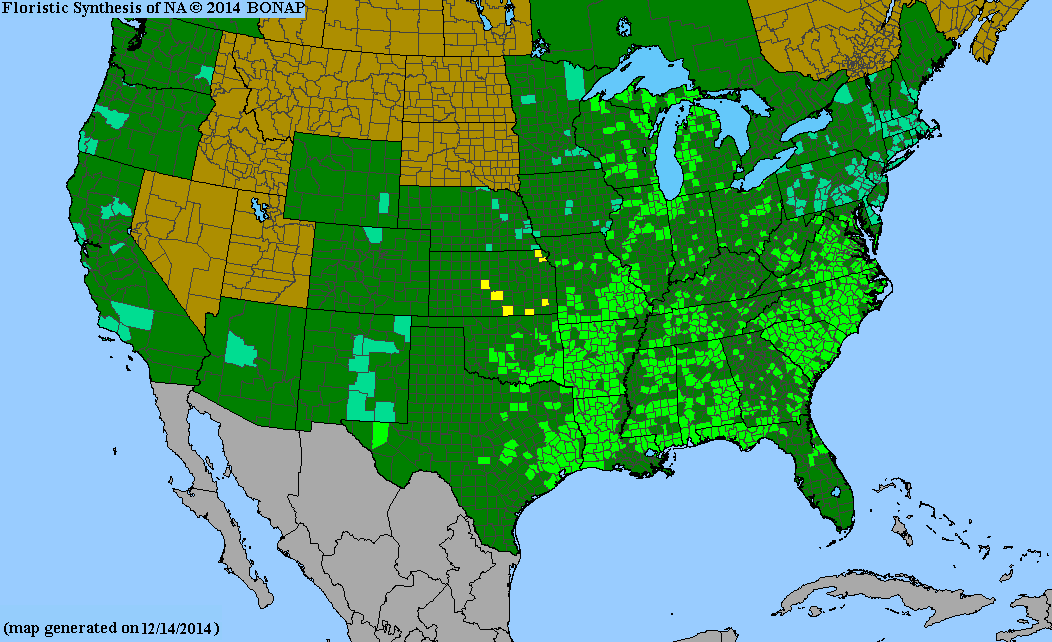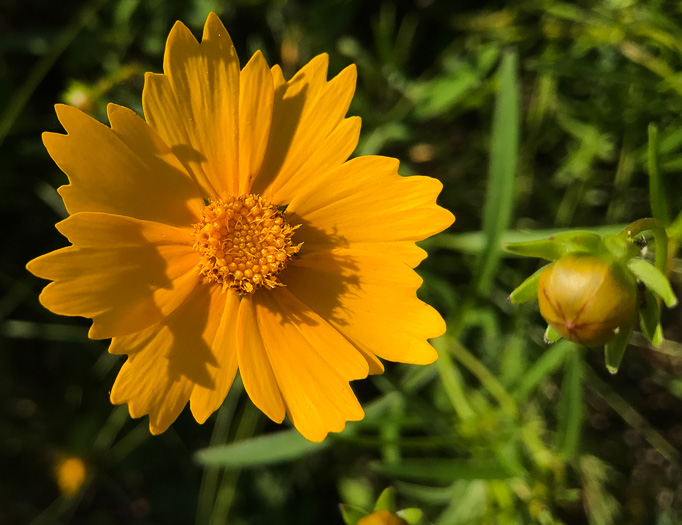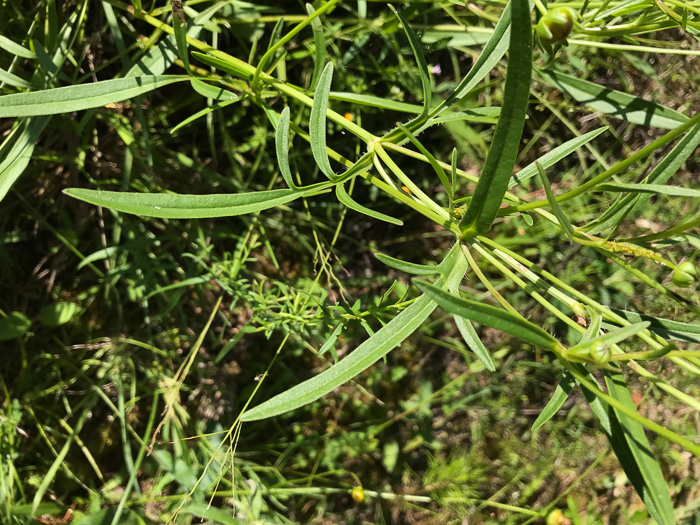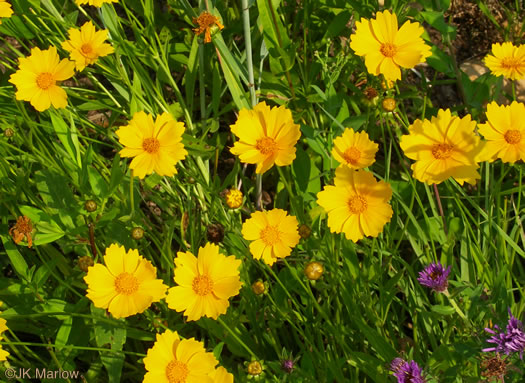Asteraceae
lanceleaf coreopsis
Coreopsis lanceolata
Synonyms
Bidens lanceolata
Chrysomelea lanceolata
Coreopsoides lanceolata
Leachia lanceolata
Other Common Names
lanceleaf tickseed, sand coreopsis
Plant Type
Herbaceous Wildflower
Life Cycle
Perennial
Typical Size
1-3 ft. tall
1-2 ft. wide
Tolerant of
Deer, Drought
Inolerant of
Direct Afternoon Sun
Propagation
By seed, By division
Plant Propagation Notes
Divisions may be needed every 2-3 years to maintain robustness.
Plants/Diseases
No serious insect or disease problems
Wildlife Benefits
Nectar/pollen source for pollinating insects, Fruit/seeds for birds
Leaves
Leaf blades 3-6 inches, simple or with 1–2+ lateral lobes, simple blades or terminal lobes lance-ovate or lanceolate with entire margins. Opposite leaf arrangement.
Flowers
Flowers golden yellow, sometimes orange with 7-20 rays. One to 3 inch diameter.
Fruit
Seeds commonly lacking pappus awns usually associated with tickseeds that adhere to fibers and skin.
Toxicity
No known toxicity.

USDA Hardiness Zones
4, 5, 6, 7, 8, 9
Light Exposure
Full Sun, Part Sun/Shade
Soil Moisture
Dry, Medium, Moist
Soil Drainage
Well-drained
Soil pH
Acidic (less than 6.0), Neutral (6.0-8.0)
Native in South Carolina?
Yes
Plant Native Habitat
Sandy soils, ditches and roadsides, other disturbed sites
Global Conservation Status (NatureServe)
Secure (G5)
Federal Conservation Status (USFWS)
Not Listed
Distribution Notes
Common in the SC Coastal Plain and Piedmont and Uncommon in the Mountains



